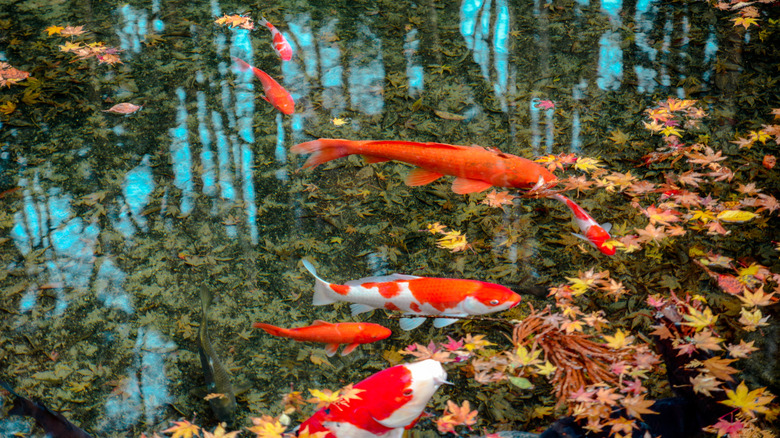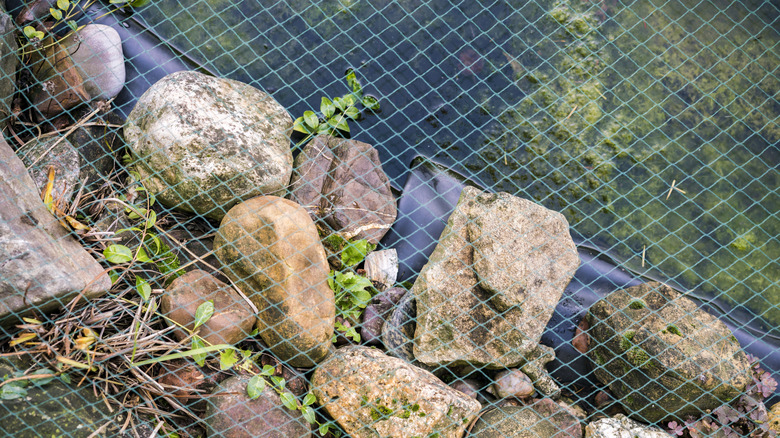The Simple Install That Makes Cleaning Up Fall Leaves Over A Pond Much Easier
We may receive a commission on purchases made from links.
If you've installed a pond in your backyard, you likely look forward to having a calming view of water, building a habitat for local wildlife, and nurturing a mix of interesting water-loving plants in your space. However, many pond owners run into an unexpected hiccup with these lovely backyard features that they may not have seen coming: autumn leaves. Though there are many environmental benefits to adding a pond to your garden, when foliage falls into the water and clogs it up, you can find yourself facing hours of frustrating cleaning.
But you don't need to remove your pond or the trees that overhang it just yet! Placing a net over your pond at this time of year will not only make leaf cleanup much easier, but also come with a whole host of other benefits as well. If your pond has fish, for example, you may be grappling with local predators, such as herons, that come in and steal them away. These nets, while keeping annoying debris out of your water, will also deter birds from your fish pond, keeping your aquatic friends safe. In addition, they are a better solution than thick tarps, as they allow better airflow around your pond. This is crucial for fish — which rely on the oxygen in the water to survive — as well as for other wildlife, such as frogs and dragonflies, which may need to be able to access the water. So, how do you install a net over your pond to keep fall leaves from clogging it up while maintaining the safety and health of its residents at the same time?
How to install a net over your fish pond
The first thing to consider when obtaining a net is the size you will need. This GasXpert Pond Netting from Amazon, for example, comes in a 7-by-10-foot version — perfect for a small, corner pond — all the way up to a 28-by-30-foot option to suit larger statement water features. Make sure to consider any landscape elements, such as large rocks or waterfalls, that will require a larger size. If your pond frequently gets clogged up with smaller debris like pine needles or birch leaves, you may also want to go with a smaller mesh, as it will be more effective at catching them. Once you have selected the right net for your water feature, installation is relatively simple.
Start by laying the net out over your pond. If yours has fragile elements such as fish, water lilies, or aquatic grasses, you may want to consider reusing some old PVC pipes and bending them over the top so that the net goes on in a dome shape. This will prevent it from sagging into the water when loaded up with leaves. Then, pull the net tight and place down the stakes provided about a foot apart to create good tension. Finally, make sure to either cut a hole in one part of the net or leave one corner open to allow any small birds or wildlife to escape should they get trapped underneath.

